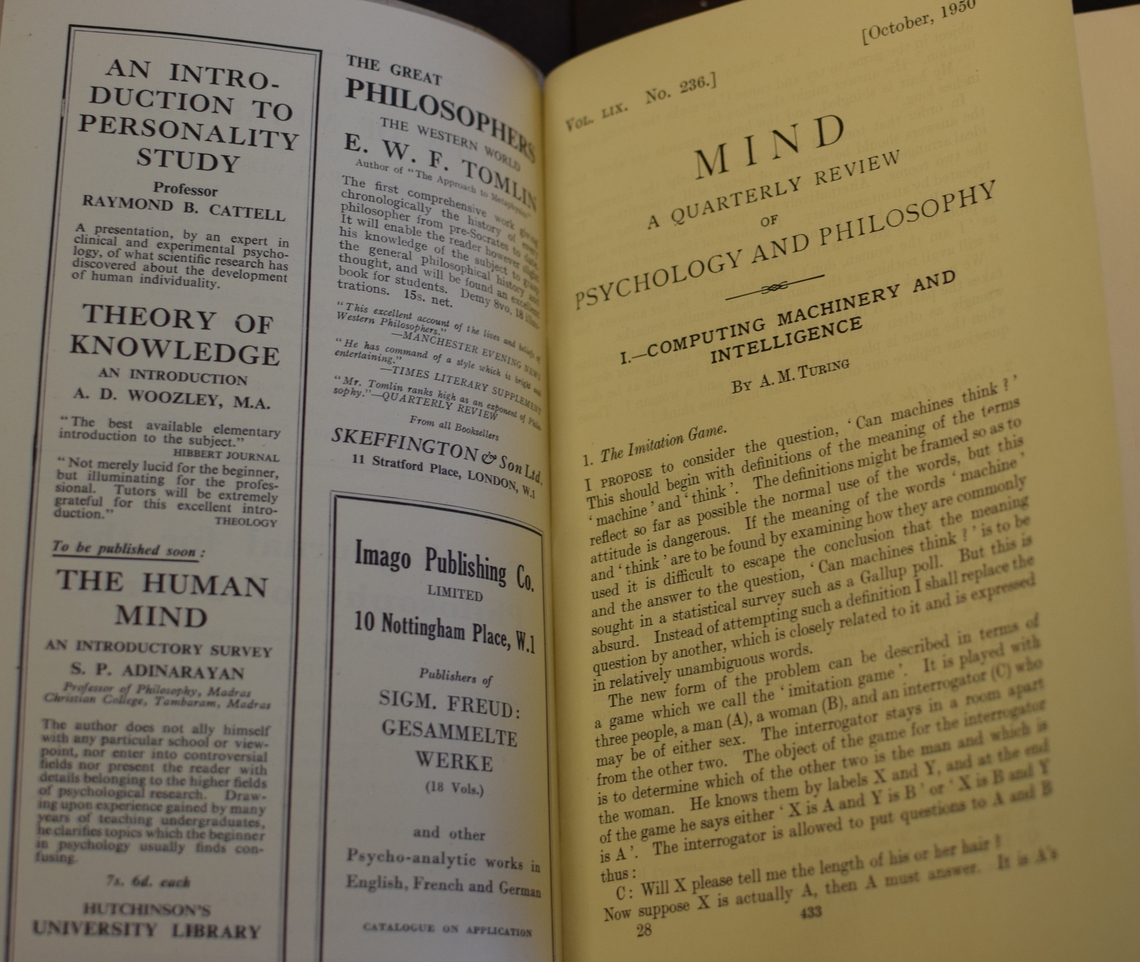"Computing Machinery and Intelligence"
-
In a 1950 essay “Computing Machinery and Intelligence,” Alan Turing posed the “Imitation Game” as a strategy for identifying machine “intelligence.” A machine could be labelled “intelligent” if a user, conversing with a machine and a human, could tell the difference between the two. For an essay addressing the existential uncertainty of how to separate humans from AI, Turing’s essay is surprisingly humorous. At one point, Turing argues that skeptics who say machines cannot “fall in love” or “make someone fall in love with it” are victims of faulty “scientific induction”— in other words, people assume based only on the machines that they have seen that no machine will ever be able to fall in love, when the emotional capabilities of future computers may be far more sophisticated.
Introduction
- Label
- "Computing Machinery and Intelligence"
- Author
- Alan Turing
- Original Publication Date
- 1950
- New Publication Date
- 1950
- Publisher
- Mind: a quarterly review of psychology and philosophy
- Location
- RBML
- Case
- 8
